{ 0 comments }
From the category archives:
Sustainable Building Materials
One under-publicized but relatively simple approaches to combating climate change through building principles are white roofs. I agree with the basic logic behind white roofs, specifically that they can help keep buildings cooler by reflecting sunlight; it reduces the “heat island effect” associated with urban development; and by reflecting the sun’s rays it can help to cool the atmosphere. Think of your ice chest, the one you keep your beer in. What color is its top? Yeah, white. Same idea, just with houses.
Here are some shots from the top of one of my buildings in San Francisco:
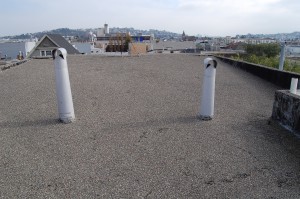
Standard Tar and Gravel roof, very old school. And let me tell you, if you are up there on a sunny day, it is flippen hot. Here are my neighbors:
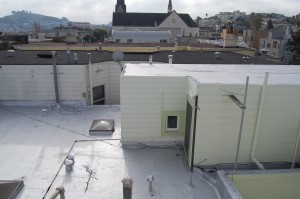 Lots of different roof types and colors, the first looks like a silvery modified bitumen type, light colored but not white. The next is a black and then brown but still dark roofing material, and its the color alone that matters. Multiply those roofs over the whole city and that is some serious heat being trapped. According to many media outlets,so lets pick the LA Times, globally roofs account for 25% of the surface of most cities, and asphalt another 35%. “If all were switched to reflective material in 100 major urban areas, it would offset 44 metric gigatons of greenhouse gases” LA Times Sept 2008. Full science behind the claim can be found from the 2008 Edition of the Journal Climate Change.
Lots of different roof types and colors, the first looks like a silvery modified bitumen type, light colored but not white. The next is a black and then brown but still dark roofing material, and its the color alone that matters. Multiply those roofs over the whole city and that is some serious heat being trapped. According to many media outlets,so lets pick the LA Times, globally roofs account for 25% of the surface of most cities, and asphalt another 35%. “If all were switched to reflective material in 100 major urban areas, it would offset 44 metric gigatons of greenhouse gases” LA Times Sept 2008. Full science behind the claim can be found from the 2008 Edition of the Journal Climate Change.
This is in general well known stuff, pretty common sense, (see Ice Chest example above) and in general still not well appreciated. There are those who argue for really space aged approaches to climate change, like the Geoengineers who sound really cool with plans to do things like “mimicking the effect of large volcanoes by spraying sulfur dioxide into the stratosphere to diminish solar radiation”. But for me, I prefer practical things that can be done right now.
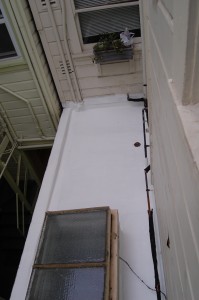
Well, it won’t save a gigaton, maybe a few hundred pounds over the next 20 years, but my contribution on the eve of Copenhagen is a new white roof. It was a necessary repair, the roof was leaking, and it has real environmental value too. When the time comes, I will whiten up my tar and gravel roof above as well. And that is how it should be. If you own older buildings like I do, or an older home, eventually you will need to put on a new roof. When you do, do your part, make it white.
{ 0 comments }
Why develop the same old cookie cutter community crap that everyone else does? Aside from the fact that McMansions built out of Styrofoam and formaldehyde suck ass I mean. It is not for lack of good examples.
Michael Reynolds, architect, developer, visionary of the Earthship Biotecture may be a bit hippy dippy at first, but his point is damn well taken: housing can be constructed to have a no resource footprint. His communities are true models for long term sustainable living. Thinking about our future, housing must be built this way; we cannot consume at our current level, the global changes already underway are catastrophic enough without us continuing to dig the hole deeper.
The following piece will give you a taste of his vision, and if you want more watch the documentary Garbage Warrior – it will give you that kick in the ass you need.
I know what I would like to do – make one of these in the middle of San Francisco. Now all I need to do is figure out how.
{ 1 comment }
I am prepping my house for sale, and it had a pretty badly cracked sidewalk and driveway. Its a pretty common problem, with a straight forward solution: bust out the old concrete and pour new. And it is great that a problem so common has a sustainable solution: fly ash concrete. Fly Ash is a waste product that comes from coal fired power plants. Now coal fired power plants are bad, and the sooner we get rid of them the better, but we do not have the infrastructure in place to stop burning the stuff, and we wont for some time. Around 100-110 million tons of Fly Ash are produced annually, often dumped here or there, with not much attention paid to it until things like this happen.
But millions of tons of fly ash can be used in concrete. The ash replaces Portland Cement, and cement production releases millions of tons of CO2 into the air every year – you have to heat limestone up to 1300 degrees to turn it into cement, and that fire creates the CO2. Concrete is the most common man made construction material used in the planet – 100s of millions of cubic yards are used each year. Every time someone does something as simple as a driveway or sidewalk repair, they can help out the environment by using some fly ash. My own little job used 4.5 cubic yards of concrete, with 15% of the cement replaced by fly ash from Bode Concrete of San Francisco’s sidewalk mix. My man Sal “Rocky” DeGuarda did the job for me, I recommend him for jobs in San Francisco.
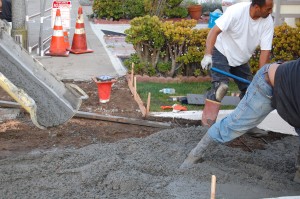
You have to ask for it, and your contractors will get it for you. People want to be responsible, because we all want a better world for our kids.
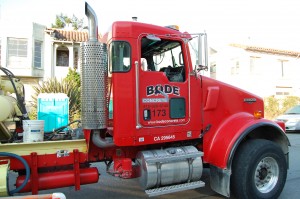
{ 0 comments }

